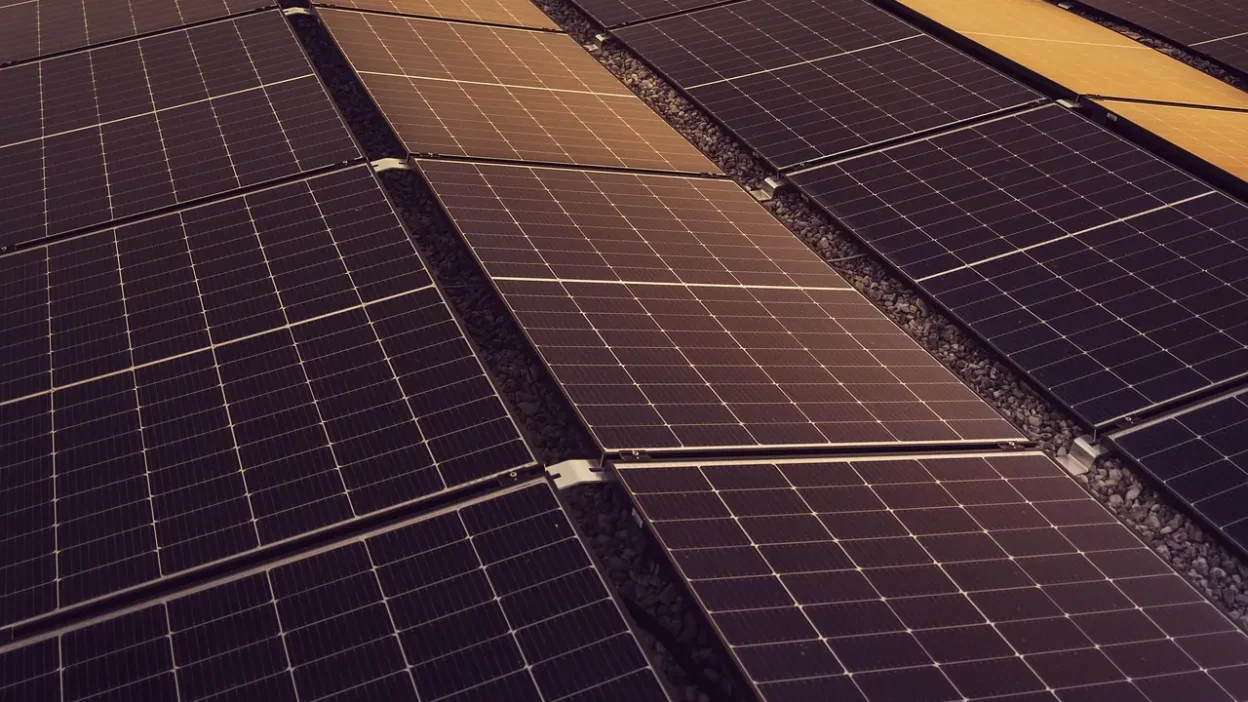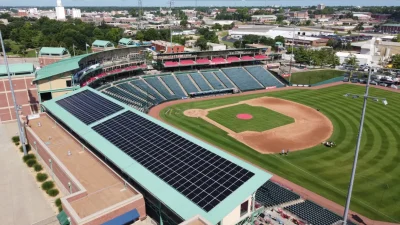Reliable solar panel monitoring systems are essential for maximizing energy generation and operational efficiency, especially in large installations. Managing hundreds or even thousands of solar panels requires more than occasional site visits and occasional readings. Modern solar panel monitoring systems allow you to keep track of performance, instantly detect issues, and optimize system output in real time. This comprehensive guide provides a detailed overview of the best options available, key features to evaluate, and how to select the ideal system for your large scale solar project. Discover what industry leaders use to ensure their solar power investments continue to pay dividends for years to come.
Table of Contents
- Why Solar Panel Monitoring Systems Matter in Large Installations
- Key Features to Look for in Solar Panel Monitoring
- Top Solar Panel Monitoring Systems for Large Scale Projects
- Cloud Based vs On Premises Monitoring Solutions
- Data Security and Integration Considerations
- Choosing the Right Monitoring System for Your Needs
- Conclusion
Why Solar Panel Monitoring Systems Matter in Large Installations
In a utility scale solar farm or a large commercial solar installation, manual inspection of all components is simply not practical. This is where solar panel monitoring systems come in. These platforms collect real time data from every solar inverter, module, and string, providing a comprehensive overview of system performance at a glance. With this data, operations teams can spot anomalies before they become costly issues, respond quickly to equipment failures, and even forecast maintenance needs to reduce downtime. For asset managers and investors, monitoring solutions provide hard data that proves energy yield and helps optimize returns.
Effective monitoring increases your solar array’s reliability and longevity. It reduces unexpected losses, optimizes inverter efficiency, and allows for predictive maintenance scheduling. In competitive energy markets that rely on performance guarantees, robust monitoring is indispensable for meeting contracts and accessing performance based incentives.
Key Features to Look for in Solar Panel Monitoring
Choosing the best solar panel monitoring system for a large installation requires evaluating much more than basic reporting capabilities. Here are the top features to prioritize:
- Granular, Real Time Data: Look for systems that collect and analyze data at module, string, and inverter levels. Instant alerts help identify underperforming panels or shaded areas before energy losses escalate.
- Scalability: The platform should easily expand with your system, accommodating new panels, inverters, and advanced sensors without major overhauls.
- Automated Fault Detection: AI powered analytics can instantly detect arc faults, inverter trips, or blown fuses, providing automatic notifications for immediate action.
- User Friendly Dashboard: An intuitive interface ensures that both technicians and asset managers can navigate the platform, customize reports, and drill down to granular data quickly.
- Remote Access: Web based or mobile friendly solutions enable offsite monitoring, a crucial feature for geographically dispersed assets.
- Advanced Analytics and Reporting: Tools that offer trending, benchmarking, and customizable reporting simplify regulatory compliance and stakeholder communication.
- Third Party Integration: API support lets you connect your monitoring solution with SCADA, energy management systems, or custom enterprise dashboards.
Advanced monitoring systems also support weather data integration, performance ratio analysis, predictive maintenance models, and sometimes machine learning driven optimization recommendations.
Top Solar Panel Monitoring Systems for Large Scale Projects
Several monitoring solutions have become industry benchmarks for reliability and technical innovation. Here are some of the best solar panel monitoring systems for large scale installations, each offering unique strengths and coverage:
1. SolarEdge Monitoring Platform
The SolarEdge platform is widely used in commercial and utility scale installations. It provides real time tracking at the module level, giving operators insight into every panel’s performance. It includes advanced alert systems, comparative analysis, and comprehensive fleet management tools. The platform’s scalability and API integrations have made it a favorite for global portfolios.
2. Enlighten by Enphase
Enphase’s Enlighten system is best known for its microinverter based installations, but it scales up smoothly for large sites. Enlighten features interactive graphs, hourly reporting, and sophisticated diagnostic alerts. Mobile and cloud based access allow for 24/7 system oversight.
3. AlsoEnergy PowerTrack
AlsoEnergy (now part of STEM) offers PowerTrack, a platform trusted by developers and operators of some of the largest solar projects worldwide. PowerTrack supports multiple user roles, customizable views, and deep analytics including automated piloting of PV and battery systems for hybrid sites.
4. SMA Sunny Portal and Data Manager
SMA’s solution combines robust hardware with software designed for professional solar asset managers. The Sunny Portal provides performance comparison between sites, detailed system logging, and integration with weather stations for predictive diagnostics.
5. Fronius Solar.web
Fronius offers a user friendly monitoring system suitable for both large and mid scale solar projects. It delivers clear, actionable data and long term trend analysis with full remote access. Exportable reports and advanced alarms help maintain system uptime.
6. Huawei FusionSolar Smart PV Management System
Huawei’s FusionSolar platform leverages Artificial Intelligence and cloud computing to provide highly automated monitoring and smart diagnostics. This system’s rapid troubleshooting and remote firmware updates are particularly valued in utility scale projects in challenging environments.
7. Tigo Energy Intelligence Platform
Tigo’s platform offers panel level visibility, system analytics, and remote troubleshooting. Its open architecture supports most inverter brands, making it ideal for mixed technology deployments in complex commercial and industrial projects.
Each of these platforms can be tailored to the specific needs of large installations, whether you operate a ground mount solar farm or a vast commercial rooftop system.
Cloud Based vs On Premises Monitoring Solutions
When evaluating monitoring systems, it is essential to understand the trade offs between cloud based and on premises solutions. Cloud based systems store and process performance data on remote servers accessed via the internet. This setup allows for real time remote access, automated software updates, and seamless scalability. Many large asset owners favor cloud platforms for their ease of deployment and low upfront IT costs.
On premises solutions, by contrast, keep sensitive data local, with higher control over security and customization. These are often used in critical infrastructure where data privacy is paramount or remote sites have intermittent connectivity. However, they require more significant IT resources to maintain and may lack some of the analytic and reporting features offered by cloud competitors. Deciding between the two depends on your site’s connectivity, your security requirements, and your organizational IT capacity.
Data Security and Integration Considerations
As monitoring systems grow more advanced and interconnected, robust data security measures are non negotiable. Sensitive operational data should be protected through strong encryption, secure APIs, user authentication controls, and regular software patching. For multinational solar asset owners, compliance with data privacy regulations such as GDPR or CCPA is also vital.
Integration capabilities are another cornerstone of an effective monitoring solution. Most large sites have more than one brand of inverter, or they need to stream data to a central asset management dashboard. Prioritize platforms with open APIs and broad ecosystem support. This enables not just present day compatibility but accommodates future growth and system evolution. Some monitoring systems also integrate with SCADA, energy trading platforms, and even predictive maintenance tools using machine learning. This holistic approach ensures a streamlined workflow and better data driven decision making.
Choosing the Right Monitoring System for Your Needs
Selecting the best solar panel monitoring system for a large installation involves balancing current requirements with future operational needs. Begin with a thorough analysis of your site: installation type, scale, existing hardware, connectivity, and staffing. Evaluate the complexity of your solar architecture, whether it involves single or multiple brands, microinverters, optimizers, or hybrid PV plus storage components.
Request demos from leading vendors and trial their dashboards under real operational scenarios. Pay close attention to reporting speed, ease of navigation, and mobile accessibility. Ask about historical data retention, API documentation, available integrations, and the level of automation provided by each solution. Factor in vendor support, update frequency, and training resources, all of which influence system longevity and your team’s ability to maximize your investment. Comparing the total cost of ownership including hardware, software licenses, support contracts, and future upgrades helps avoid unpleasant surprises down the line.
Look for references and case studies involving installations similar to yours. Speak with current users to gauge reliability, uptime, and vendor responsiveness in real world conditions. For multinational or multi site operators, ensure the monitoring system handles time zones, regulatory reporting variations, and remote support. If you plan future expansion, verify that adding new plants or integrating new technologies will not require starting from scratch. Adaptable, modular systems save resources in the long run and adapt to rapidly advancing solar technology.
Conclusion
Solar panel monitoring systems play a decisive role in the performance and financial success of large installations. Their real time insights enable rapid response to performance dips, mechanical failures, and environmental changes. The best systems offer module level granularity, proactive fault detection, user friendly dashboards, robust security, and seamless integration capabilities. By carefully weighing available options and considering scalability, security, and analytics features, you can protect your solar assets and ensure optimal energy yield year after year.
Today’s solar energy market demands robust digital oversight. Whether operating a utility scale plant or a large commercial array, choosing and deploying the right solar panel monitoring system ensures ongoing efficiency, high returns, and peace of mind in a rapidly evolving energy landscape.





